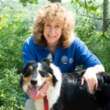The bat scientists
(Book)
J 599.4 CARSO
1 available
Copies
| Location | Call Number | Status | Due Date |
|---|---|---|---|
| Central - Kids Nonfiction | J 599.4 CARSO | Checked Out | June 18, 2025 |
| Cherrydale - Kids Nonfiction | J 599.4 CARSO | Checked Out | May 10, 2025 |
| Shirlington - Kids Nonfiction | J 599.4 CARSO | Available |
Description
More Details
Notes
Similar Series From Novelist
Similar Titles From NoveList
Similar Authors From NoveList
Published Reviews
Booklist Review
*Starred Review* With clear, informal prose and beautiful close-up color photos on every double-page spread, this exciting title in the Scientists in the Field series follows a team of dedicated bat specialists. Along the way, Carson dispels popular myths about the often maligned animals with solid information: bats are not blind, very few drink blood, and they are important pest controllers. The color photographs, including many full-page images, are spellbinding, from the image of a Texas cave filled with millions of adult bats to a close-up view of a single, walnut-sized baby. Many facts will be new to most readers bats are the only mammals that fly; more than one-fifth of all the roughly 5,000 mammal species are bats and young people will be easily drawn in by Carson's lucid, fascinating explanations of concepts and her vivid descriptions of scientists at work. The conservation message is urgent: bats' habitats are quickly disappearing because of overhunting, tourism, mining, and many other human-related causes. Whether describing the physics of echolocation or the present crisis of white-nose syndrome, Carson encourages readers to rethink stereotypes about creatures once scorned as flying vermin and shows how intricately their survival is tied to our own. Extensive back matter, including a glossary and a bibliography of books and Web sites, closes this standout resource.--Rochman, Hazel Copyright 2010 Booklist
School Library Journal Review
Gr 5-8-This series entry takes readers along with Merlin Tuttle and a crew of BCI (Bat Conservation International) into bat caves and bridges, trees and houses to study these agile flitterers. Carson's readable, informative text dispels the ugly myths that have haunted these nocturnal hunter/gatherers, detailing bats' usefulness to humankind from gobbling up mosquitoes to scarfing down corn earworm moths to pollinating a multitude of plants throughout the rain forest. Replete with superb close-ups of big ears, hairless pups, furrowed faces, and fragile wings, the text describes the damage done by humans to bat environments and the ravages of white-nose syndrome, and tells of efforts to restore and protect hibernating sites and maternity colonies. Readers not ready for this richness of detail should enjoy Laurence Pringle's Handsome Bats (Boyds Mills, 2000), while those wanting more can plunge into Sandra Markle's elegant Inside and Outside Bats (S & S/Atheneum, 1997). Readers in the "more, more, more" contingent can investigate Karen Taschek's more challenging Hanging with Bats (Univ. of Mexico Press, 2008). A strong scientific look at a unique and often unloved mammal and the scientists who happily investigate them.-Patricia Manning, formerly at Eastchester Public Library, NY (c) Copyright 2010. Library Journals LLC, a wholly owned subsidiary of Media Source, Inc. No redistribution permitted.
Horn Book Review
"The single biggest threat to bats is human ignorance about them," scientist Merlin Tuttle explains to Carson and to readers. "Most people are very happy to protect bats if only they understand them." This impassioned book is rich with fascinating information and photographs and will make readers think about bats in a new way. With deft description and careful explanation, Carson profiles Tuttle and his fellow bat-lovers of Bat Conservation International (BCI) as they research these misunderstood creatures. The clear text debunks "Batty Myths" -- bats are not flying mice nor do they suck blood -- as it highlights BCI's conservation efforts. Uhlman's large photos are not for the squeamish (one picture shows a coachwhip snake with a bat clamped in its mouth), but many of his shots (such as a swarm of silhouetted Mexican free-tailed bats flying out of Bracken Bat Cave near San Antonio, Texas) have a stately beauty. The last chapter focuses on the struggle to understand and contain white-nose syndrome, a devastating and fast-spreading disease that is killing hibernating bats. Back matter includes a glossary and index as well as additional resources where budding scientists can learn more about protecting these flying mammals that "play an important role in so many ecosystems." chelsey g. h. philpot (c) Copyright 2010. The Horn Book, Inc., a wholly owned subsidiary of Media Source, Inc. No redistribution permitted.
Booklist Reviews
*Starred Review* With clear, informal prose and beautiful close-up color photos on every double-page spread, this exciting title in the Scientists in the Field series follows a team of dedicated bat specialists. Along the way, Carson dispels popular myths about the often maligned animals with solid information: bats are not blind, very few drink blood, and they are important pest controllers. The color photographs, including many full-page images, are spellbinding, from the image of a Texas cave filled with millions of adult bats to a close-up view of a single, walnut-sized baby. Many facts will be new to most readers—bats are the only mammals that fly; more than one-fifth of all the roughly 5,000 mammal species are bats—and young people will be easily drawn in by Carson's lucid, fascinating explanations of concepts and her vivid descriptions of scientists at work. The conservation message is urgent: bats' habitats are quickly disappearing because of overhunting, tourism, mining, and many other human-related causes. Whether describing the physics of echolocation or the present crisis of white-nose syndrome, Carson encourages readers to rethink stereotypes about creatures once scorned as flying vermin and shows how intricately their survival is tied to our own. Extensive back matter, including a glossary and a bibliography of books and Web sites, closes this standout resource. Copyright 2010 Booklist Reviews.
School Library Journal Reviews
Gr 5–8—This series entry takes readers along with Merlin Tuttle and a crew of BCI (Bat Conservation International) into bat caves and bridges, trees and houses to study these agile flitterers. Carson's readable, informative text dispels the ugly myths that have haunted these nocturnal hunter/gatherers, detailing bats' usefulness to humankind from gobbling up mosquitoes to scarfing down corn earworm moths to pollinating a multitude of plants throughout the rain forest. Replete with superb close-ups of big ears, hairless pups, furrowed faces, and fragile wings, the text describes the damage done by humans to bat environments and the ravages of white-nose syndrome, and tells of efforts to restore and protect hibernating sites and maternity colonies. Readers not ready for this richness of detail should enjoy Laurence Pringle's Handsome Bats (Boyds Mills, 2000), while those wanting more can plunge into Sandra Markle's elegant Inside and Outside Bats (S & S/Atheneum, 1997). Readers in the "more, more, more" contingent can investigate Karen Taschek's more challenging Hanging with Bats (Univ. of Mexico Press, 2008). A strong scientific look at a unique and often unloved mammal and the scientists who happily investigate them.—Patricia Manning, formerly at Eastchester Public Library, NY
[Page 136]. (c) Copyright 2010. Library Journals LLC, a wholly owned subsidiary of Media Source, Inc. No redistribution permitted.Reviews from GoodReads
Citations
Carson, M. K. (2010). The bat scientists . Houghton Mifflin Books for Children.
Chicago / Turabian - Author Date Citation, 17th Edition (style guide)Carson, Mary Kay. 2010. The Bat Scientists. Boston: Houghton Mifflin Books for Children.
Chicago / Turabian - Humanities (Notes and Bibliography) Citation, 17th Edition (style guide)Carson, Mary Kay. The Bat Scientists Boston: Houghton Mifflin Books for Children, 2010.
Harvard Citation (style guide)Carson, M. K. (2010). The bat scientists. Boston: Houghton Mifflin Books for Children.
MLA Citation, 9th Edition (style guide)Carson, Mary Kay. The Bat Scientists Houghton Mifflin Books for Children, 2010.







































































